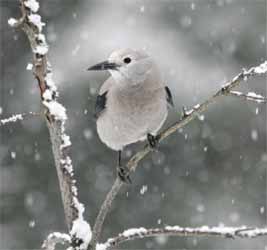During the winter months little brown bats will use caves and abandoned mines for hibernation but are known to live in houses during other seasons.
Do birds stay in attics for winter.
Removing birds from attic.
An essential aspect of attic vents that is often overlooked is how to keep birds and pests out of them.
Sometimes they ll just roost under the eaves or in the eaves on the soffit but.
The same approach can be applied whether it s to prevent insects from getting in your cupboards to keeping birds from your attic.
Pigeons barn swallows starlings house finches house sparrows are all candidates for birds in a house or attic.
Birds do sometimes live in attics.
You understandably want to circulate as much air as possible to protect your house against extreme temperatures and moisture.
Birds won t leave an attic unless you take action.
Following the breeding season and autumn migration the community of birds in your garden may be different to the summer months.
However by creating an opening you also create a potential passage for unwanted guests.
Like other pests the best way to avoid an infestation is to take precautionary measures.
Many laws protect birds.
Kill traps are also dangerous and.
They know when to leave based on photo periods amount of.
If homeowners hear scratching squawking or flapping noises coming from an attic they should check for a bird infestation.
As well as our resident breeding birds we are joined by migrants from scandinavia russia and continental europe.
Some may decide to stay through winter.
The use of poison or toxic gases is never recommended to resolve a bird invasion.
Here is a list of my top species to look out for this winter and how you can help them.
When birds roost in attics the noises they make cause problems for residents.
Other birds do not have sufficient food sources to stay through winter since the ground is frozen and natural food sources are depleted.
Of the two big brown bats are more likely to live inside houses.
Big brown bats are hearty enough to survive winter inside houses and hibernate in walls and attics to stay comfortable and safe.
The little brown bat and big brown bat especially enjoy roosting in homes and other buildings.
An attic is a big dry safe place to live in and certain species of birds will enter an attic to roost and nest.
In fact birds can remain in an attic for three to four months.
This diy article covers some dos and don ts for when you re trying to keep.
Only the heartiest of colder climate wild birds which have.
Winter migration and the backyard birds that stay behind can raise many questions about how a bird survives such journeys and temperatures.
Once you have removed the birds from your attic you ll want to make sure they stay out.
When the winter snow starts falling in many parts of the country some backyard birds have already departed for warmer climates while other birds are migrating into backyards from further north.
Their maternity colonies are commonly found in attics through late summer as the high heat helps the bats focus less on staying warm and more on spending their energy on growing.





























